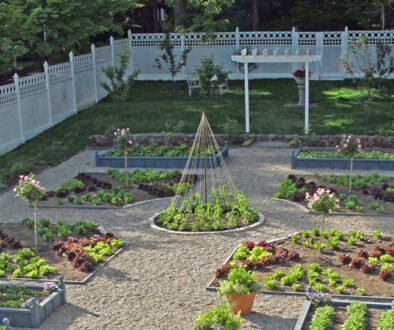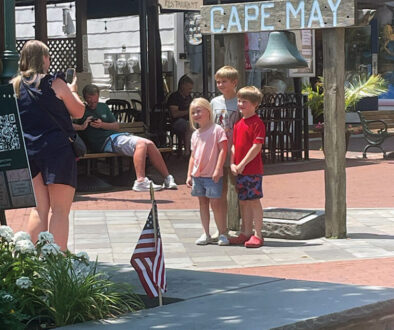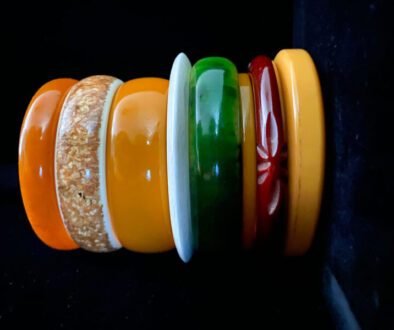Horsing Around on Cape Island
Not all that long ago, horses were a common sight on the coastal communities and barrier islands in New Jersey. Here on Cape Island, they remain.

“For one to fly, one needs only to take the reins.”
– Melissa James
There was a day, not all that long ago, when horses were a common sight not only on Cape Island but on all the coastal communities and barrier islands in New Jersey. Today, that’s about the last thing you’ll see. Yet here on Cape Island, they remain: horses.
Not just those we see pulling beautiful carriages up and down the streets of Victorian Cape May, but there are still estates and farms throughout the island where horses live and roam acres of field and woods in the rural interior.
So, what about those horse-drawn carriages we see in downtown Cape May? These horses are not trailered in each day from offshore, but they actually walk to town from their pretty little farm off Stevens Street in West Cape May. As the weather warms up, the carriages are pulled out from the barns and the horses are made ready to go back to work.
The Cape May Carriage Company was established in 1983 and at one time had 27 horses, but most have been retired. Only 10 now serve the tourists who enjoy a leisurely carriage ride through the historic neighborhoods. It’s the perfect match with its past, where horses were once the only way to get around the island. There are still a few remaining hitching posts along Washington Street.
But it isn’t all business at the carriage company. There’s a passion and devotion to the horses that are at the heart of this enterprise.
“Being around horses is a lifestyle. You are with them every day and need to know the animal itself and its particular personality—and even its vital signs,” explains Mario Lattuca-Bonamico, who is both manager and partners with Chantel Semanchik of Cape May Carriage Company. Together they have overseen it for the past 12 years.

“Just like most people who know their dog or cat’s behaviors, we know each horse we own and care for seven days a week, year-round,” Mario said. “Each one needs grooming, bathing, feeding, and exercise.”
Draft horses such as Percheron and Belgians are a working breed, very docile with thicker bones. They’ve long been used to pull heavy plows, downed trees, and even war cannons. They’re certainly sturdy enough to pull the carriages up and down the streets for tour excursions. Oreo is the horse Mario is teamed up with for a day of tour rides, and he has been a carriage horse for over 13 years.
“It’s not all work and no play,” adds Mario. “The farm is just down the street from Higbee Beach, and we often ride these horses down to the bay and let them swim. Oreo loves to dive under the water like a dolphin! Watching him paddle about in the bay is a sight to behold.”
It’s not too hard to imagine the west side of Cape Island being all farmland with the small hamlet of West Cape May buried in the center. Parts of this cozy community were once home to the hired help who worked the businesses of Cape May City.
Coming over the bridge on the west side of the island you will pass Taylor Farm, which not all that long ago stretched all the way to Stimpson Lane, and the No Frills Farm stand. Farms filled the land that is now Higbee Wildlife Management Area, Cape May Point State Park and its lighthouse, as well as The Nature Conservancy’s South Cape May Meadows preserve, and on the eastern side of the bridge, The Garrett Family Preserve. Many of these old farms have become beautiful destinations such as Willow Creek Winery, Rea’s Farm, and Beach Plum Farm. Conserving land and wildlife have been the center of planning, and it has created a unique experience for visitors and those who make this place home year-round.
Traveling along these back roads you’ll pass the Smith ranch on Bayshore Road, where horses leisurely graze. If you’re not expecting to see horses, it’s a wonderful surprise, and somewhat unexpected for the average New Jersey beachgoer. Ed Smith, who was once mayor, and his wife Anne once kept cows and pigs on this parcel of land. Now the 30 acres of green fields are home to a host of boarded horses. Their grandson Ed Howell oversees the property now, and Helen Howell, his mother, lives down the road on another stretch of land with horses that board with her.

Karen McClosky has kept her horses here her whole life, and her grandmother and uncle once worked for the Smiths. “I grew up in West Cape May where farmers and fishermen lived throughout the surrounding countryside of Cape Island,” she told us. “All we did was ride our horses all over the island and over the bridge where more trails led through endless forests on the mainland. I’ve never known life apart from owning a horse. It is such a unique relationship to have with an animal.”
Indeed, having a horse was a part of Karen’s day-to-day life. “We’d go out on our horses all day—down to Higbee Beach and swim and the horses would swim and meander all through the woods,” she recalled. “Traffic was minimal. Tractors and farmers and the handful of people who lived on this side of the Cape were minimal. But now we need to ride within the ranch borders because the traffic on these back roads easily spooks the horses, and some of the new homeowners are not fond of horse droppings along the road. Horses spook easily, and cars coming up behind them make them nervous.”
It’s truly a relationship, according to Karen. “Once you win a horse’s trust, they trust you for life, and that helps them navigate the influx of people and traffic now on the island. They are fascinating to live with and develop a binding relationship. They’re so smart and curious. They want and need to work. All that massive energy—they have to run, migrate, graze, and keep traveling in herds. It is hard on their free souls if kept in a small space. This ranch allows them to stay outside at night. Stuck in a narrow confining stall is a challenge for a horse’s spirit. I can only hope I will always have a horse or two in my life here on Cape Island.”
Just around the bend from the Smiths you’ll see the sign for Hidden Valley Ranch, the oldest riding stable on the island and once part of Taylor Farm. Sixty years ago, owner Maryellen (Taylor) Dickinson sold the ranch’s land to the State of New Jersey with the intention that it would never be developed and would remain a part of the forests and fields around it. Her granddaughter Angie still lives on the land.
It remains a rider’s paradise and a journey into the past as you wind down the long dirt road into its open fields. Horses mill about, grazing in its pastures. There’s an eagles nest the size of a small car that has been added to over the course of many seasons. You can’t hear anything except birds, and the grass is so very green.
Hidden Valley was the premiere place to learn how to ride for decades. Many local young boys and girls fulfilled their horse dreams on this farm, and Ginny Elwell was one of them.
Ginny Elwell Heim has the fondest memories of Hidden Valley, where she grew up riding. “Horses have been a big part of my life,” remarks Ginny. “I grew up on Columbia Avenue in Cape May City and I am fourth generation born and raised here. My grandparents Louis and Virginia Elwell lived on Columbia Avenue and my parents Robert and Jane Elwell still live on that street. My father was once mayor. As a child my parents gave me everything I could ever want, including horseback riding lessons at Hidden Valley Ranch. It was 375 acres of farming, breeding, training, showing, and running a business of trail rides open to the public. I took riding lessons, boarded my ponies there, and it’s where I had my first job. I earned $1.00 per hour leading trail rides through the woods and down along Higbee Beach. There were occasions I would ride my pony or horse to my friend’s house a short distance away, hang out and play, then ride home.”
Ginny and her husband Alan eventually bought a small farm on Shunpike Road just down the street from Hidden Valley where she could keep her own horses and teach her children to ride and care for them. Ginny wanted to be able to see her horses from her windows, right in her own yard. Now those children are grown, and Ginny believes they will one day have horses when they settle down.
“It was very common to have horses on your property on Cape Island 40 years ago,” Ginny said.
“There were many farms. My current neighbor used to walk this block where we now live and said at one time he counted 29 horses. Now there are only our two, and our neighbor has one.”
Because it is as precarious to walk them on Shunpike as it is Bayshore Road, Ginny will pack up her horses in their trailer and drive around the corner to Linda Steinberg’s Green Acres equestrian farm where a huge indoor riding ring fits the bill to ride her beloved beasts.

Linda is also a passionate horse lover and dreamed of the very place she created with her husband Howard here on Cape Island. Growing up in Bucks County, Pennsylvania, Linda loved country life and was fascinated by horses. But she didn’t buy her first horse, Ty, until she was 48. He was the remainder of an auction, yet proved to be a lovely horse that Linda poured her heart into. Her husband was ready to retire to their summer home in Cape May and Linda wanted to create a riding facility that matched her passion and personal philosophy about horses and how to ride and connect with them. What began as a dream has now become Green Acres Farm, which opened its “barn” doors in 2015 on a 20-acre parcel of land off New England Road.
“I was introduced to the Natural Horsemanship philosophy, where you view horses more from their perspective rather than the human side,” Linda said. “It is empathic by design and seeks to understand and respect a horse’s natural instincts and communication methods. It eventually creates trust, respect and understanding between two beings—one human, one animal. With a horse who is predominantly a prey animal, they are vulnerable and susceptible to predators. They have a very different take on the world that circles around the safety of a herd, keen eyesight, and incredible speed to flee danger. When a person enters a horse’s personal space, the horse is often alone and confined. This is so contrary to how it lives in the wild. But through mutual respect between a human and a horse, a beautiful kinship can emerge. This is the place from where I teach and designed this facility.”
Although their numbers may have dwindled over time, Cape Island remains a beautiful place to have farms and horses—and dreams that come true. Its diversity of city, country, field and beach, new and old, are rare and precious.



